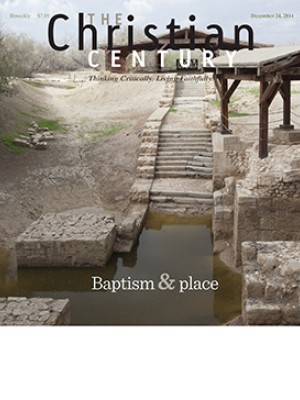Parents are top influence in teens remaining active in religion as young adults
Mothers and fathers who practice what they preach and preach what they practice are far and away the biggest influence related to adolescents keeping the faith into their twenties, according to new findings from a landmark study of youth and religion.
Just 1 percent of teens age 15 to 17 raised by parents who attached little importance to religion were highly religious in their mid to late twenties.
In contrast, 82 percent of children raised by parents who talked about faith at home, attached great importance to their beliefs, and were active in their congregations were religiously active as young adults, according to data from the latest wave of the National Study of Youth and Religion.
Read our latest issue or browse back issues.
The connection is “nearly deterministic,” said Christian Smith, lead researcher for the study and a sociologist at the University of Notre Dame in Indiana.
Other factors such as youth ministry, clergy or service projects, or religious schools pale in comparison.
Nothing else “comes remotely close to matching the influence of parents on the religious faith and practices of youth,” Smith said in a recent talk about the findings at Yale Divinity School. “Parents just dominate.”
Several studies have shown that the religious behaviors and attitudes of parents are related to those of their children.
In research using data from the National Longitudinal Study of Adolescent Health, sociologists Christopher Bader and Scott Desmond found that children of parents who believe that religion is very important and display their commitment by attending services are most likely to transmit religiosity to their children.
This is the fourth wave of the NSYR, a comprehensive national study first conducted in 2002–2003 among teens age 13 to 17 and their parents. These early findings add powerful evidence of the importance of mothers and fathers as the study traces the path of young respondents, who are now age 24 to 29.
One of the strongest factors associated with older teens keeping their faith as young adults was having parents who talked about religion and spirituality at home, Smith said.
Other key factors included having parents for whom personal faith is important and who demonstrate that faith through attending services. Teens whose parents attended worship with them were especially likely to be religiously active as young adults.
Among related findings, parents from religious traditions that in general promote greater commitment and encourage discussing faith outside the sanctuary also were more likely to have children who remained active in their faith as young adults.
For example, two-thirds of teens raised by black Protestant parents and half of adolescents with conservative Protestant parents had high or moderate levels of religiousness as young adults. On the other end, 70 percent of teens raised by mainline Protestant parents had minimal or lower levels of religiousness as young adults.
In interviews, many mainline Protestant parents said they “feel guilty if they think they are doing anything to direct their children toward their religion as opposed to any other possibility,” Smith said. They question if they should tell their child “what I believe is right.”
Yet if parents and faith communities are not able to communicate their beliefs, Smith said later, “the game’s over, already.”
The role of parents is even more critical today as trust in institutions declines and many children with more demanding schedules are spending less time in congregations, Smith noted.
Yet, he said, there are some powerful “cultural scripts” that discourage parents from taking an active role in the spiritual lives of their teens.
Cultural messages encourage parents to turn their children over to “experts,” and many parents consider faith formation to be the responsibility of clergy, Sunday schools, and youth groups, Smith said.
“Parents, for better or worse, are actually the most influential pastors . . . of their children,” Smith said. “Parents set a kind of glass ceiling of religious commitment, above which their children rarely rise.” —theARDA.com
Reprinted with permission of the Association of Religion Data Archives






